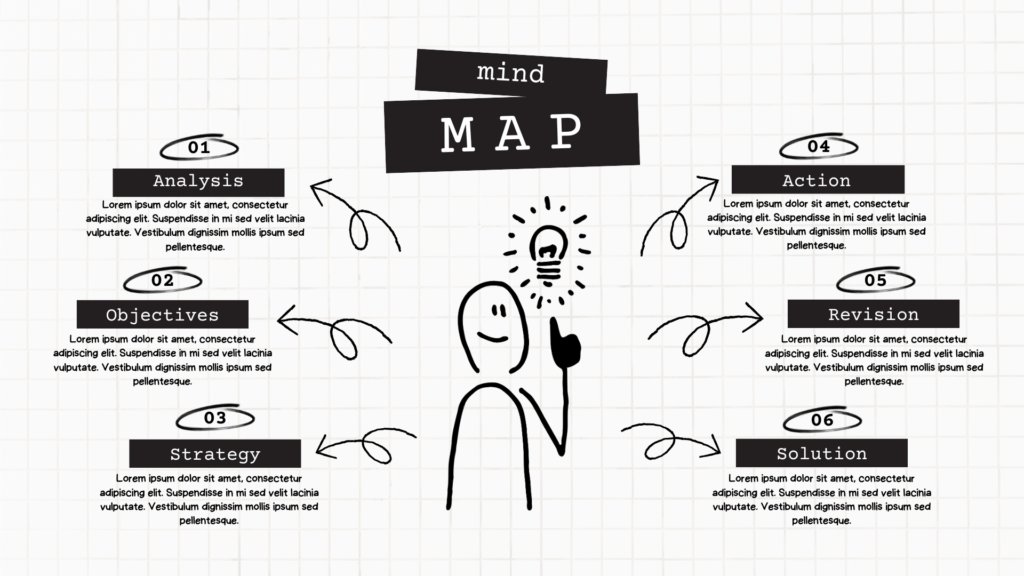Mind maps are an invaluable tool for organizing thoughts, brainstorming ideas, and enhancing creativity. Traditionally, mind maps were created by hand, using pen and paper, but with the advent of technology, digital mind mapping tools have gained popularity. In this article, we will explore the benefits of digital mind mapping tools compared to hand-drawn mind maps, providing insights into how these tools can improve productivity and streamline the mind mapping process.
1. Enhanced Flexibility and Editability
Digital mind mapping tools offer unparalleled flexibility and editability compared to hand-drawn mind maps. With digital tools, you can easily add, move, and delete elements within your mind map. This flexibility allows for seamless restructuring and reorganizing of ideas, without the limitations of physical space. Furthermore, digital tools provide the ability to undo and redo changes, ensuring a polished and refined mind map.
Research studies, such as the one conducted by Jones and Childers (2010), have highlighted the advantages of digital mind mapping tools in terms of increased flexibility and efficiency in the editing process. The ability to effortlessly modify and rearrange elements contributes to better organization and improved overall clarity.
2. Effortless Collaboration and Sharing
Collaboration is made effortless with digital mind mapping tools. These tools allow for real-time collaboration, enabling multiple individuals to work on the same mind map simultaneously. Team members can contribute their ideas, make suggestions, and provide feedback, fostering a collaborative and dynamic environment.
Digital mind mapping tools also facilitate easy sharing of mind maps with others. Whether it’s sharing with colleagues, classmates, or clients, you can quickly and securely share your mind maps via email, cloud storage platforms, or collaborative project management tools. The seamless sharing capabilities of digital tools enhance teamwork and promote effective communication.
3. Integration with Other Tools and Platforms
Digital mind mapping tools often come with a wide range of integrations, allowing you to connect your mind maps with other productivity tools and platforms. For example, you can integrate your mind maps with project management software, note-taking apps, or task management platforms. This integration streamlines your workflow, eliminates duplicate efforts, and ensures seamless information transfer between different tools.
By leveraging integrations, you can easily import and export data, synchronize tasks and deadlines, and maintain a centralized hub for your project-related information. The ability to integrate mind maps with other tools enhances productivity, enabling you to effectively manage your projects and tasks.
4. Multimedia and Visual Enhancements
Digital mind mapping tools offer a wealth of multimedia and visual enhancements that can enrich your mind maps. You can add images, videos, audio files, and hyperlinks to external resources, creating a multimedia experience that supports and enhances your ideas. These visual and multimedia elements bring your mind maps to life, making them more engaging and memorable.
Research conducted by Kalyuga et al. (2012) highlights the cognitive benefits of visual and multimedia learning. Incorporating images and multimedia elements into mind maps can aid in information retention, improve understanding, and enhance creativity.
5. Time-Saving and Efficiency
Digital mind mapping tools save time and improve efficiency in the mind mapping process. The ease of creating, modifying, and rearranging elements significantly reduces the time required to develop a comprehensive mind map. With digital tools, you can effortlessly link related ideas, add notes, and reorganize information, allowing you to focus on the content rather than the mechanics of drawing.
Studies by Lee and Lee (2012) have demonstrated the time-saving benefits of digital mind mapping tools, showing that individuals using digital tools complete mind maps faster compared to those using traditional hand-drawn methods. The time saved can be allocated to other important tasks, promoting overall productivity.
Conclusion
Digital mind mapping tools offer numerous advantages over hand-drawn mind maps, ranging from enhanced flexibility and collaboration to multimedia capabilities and time-saving features. The seamless editing, effortless collaboration, and integration with other tools make digital mind mapping tools a valuable asset in various professional and educational settings.
While hand-drawn mind maps hold their own charm and can be beneficial in certain contexts, digital tools provide an edge in terms of efficiency, organization, and accessibility. By embracing digital mind mapping tools, individuals and teams can leverage the power of technology to unlock their creative potential and streamline the mind mapping process







